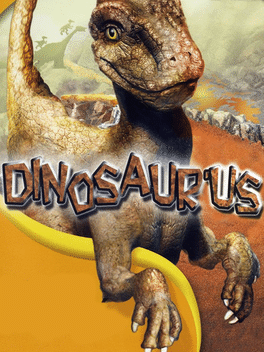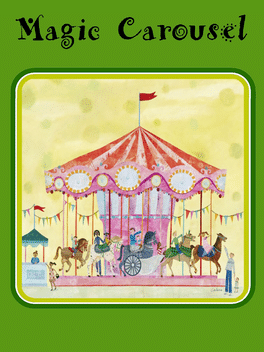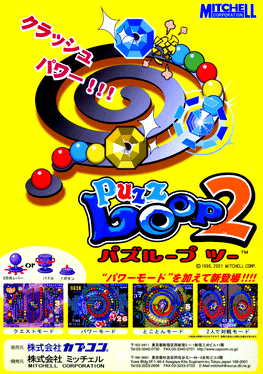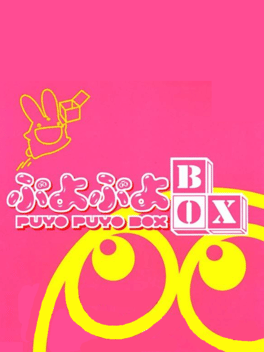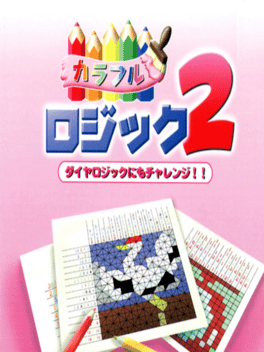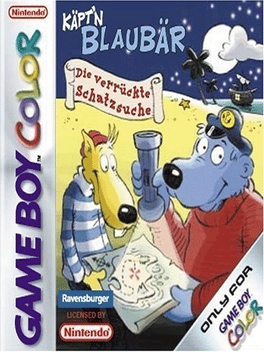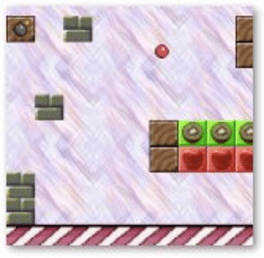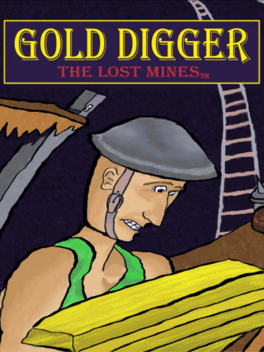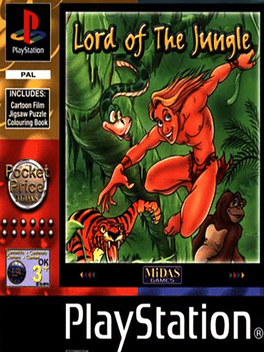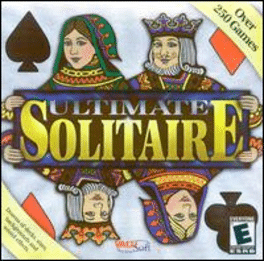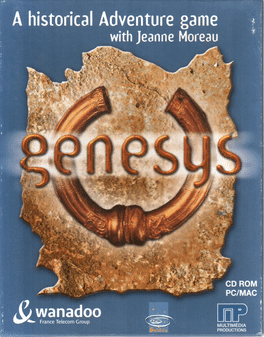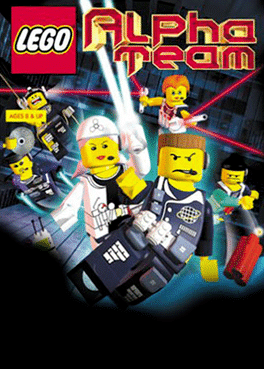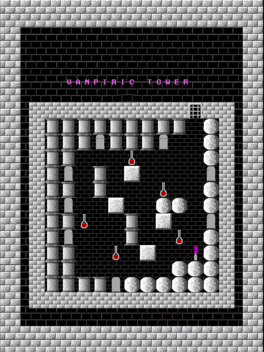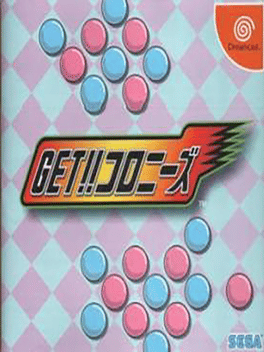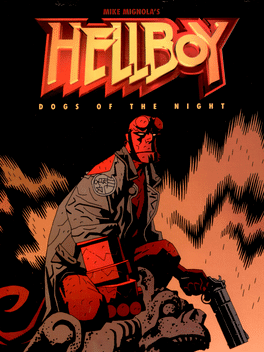New Ps3 Games - Page 260
-
Dinosaur'us
2001
Dinosaur'us
2001
Dinosaur'us is a puzzle game with Lemmings-like gameplay. Each level is a scrolling screen where baby dinosaurs hatch. The player has to click on them as they come out from their nests, using their abilities to create a path so they can reach the parent dinosaur that acts as the level exit. -
Magic Carousel
2001
Magic Carousel
2001
[Unreleased 1983 Intellivoice] Identify animals on a carousel and follow instructions given throughout the game. Score points by doing what the voices tell you: Choose the correct carousel animal. Play a piano. Drink some milk. Answer a telephone. Learning game for children. 2 different game screens. 1 player Intellivoice game. DEVELOPMENT HISTORY Marketing specifically requested a children's educational game for the Intellivoice. Programmer Ron Surratt (Atari 2600 BurgerTime) and graphic artist Peggi Decarli (USCF Chess) drew up some initial concepts for the game (Ron's input was requested because he used to be a teacher), then Steve Ettinger was assigned as programmer. New-hire Joe Ferreira was added to train with Peggi as a graphics artist. Steve and Joe quickly became a strong design team, taking the concept from a barnyard to a carousel and making the game their own. By the time it was finished, however, Marketing decided that sales of Intellivoice units were too low to support such a " -
Puzz Loop 2
2001
-
Puyo Puyo Box
2001
Puyo Puyo Box
2001
This is a compilation game consisting of modes from previous Puyo Puyo games. It is Compile's last recognized Puyo Puyo title in the series before Sega obtained the rights. Puyo Puyo Box, being a compilation, primarily consists of modes from earlier Puyo Puyo games, but also contains original content. This game has a plethora of game modes available to the user. It contains ports of "Puyo Puyo" and "Puyo Puyo 2", as well as a RPG-styled quest mode in which the player plays as Arle and battles against members of the other cast in Puyo Puyo matches. It also houses a "Stage Clear" mode in which you have to face either 10, 20, or 30 opponents, as well as two multiplayer modes which can be played with either other players or AI substitutes. For the Quest mode itself, it allowed the player to customize the armory in ways in which made Arle stronger with a double-edged sword effect. You could remove the Puyo Rings in order to beef up her attack at the expense of being unable to see your next pieces for example, and the -
Colorful Logic 2
2001
Colorful Logic 2
2001
Puzzle game series which recorded the popular "logic puzzle", "Colorful Logic" 2nd. The recorded 300 questions in total, it looks bright "color logic", NO ease play. You can enjoy the logic of three 1 "black-and-white logic", the debut of "Dialogic". Set in a theme park, let's challenge to a number of challenges. -
Käpt'n Blaubär: Die Verrückte Schatzsuche
2001
Kapt'n Blaubar: Die verruckte Schatzsuche is a Puzzle game, developed by Shin'en and published by Ravensburger Interactive Media GmbH, which was released in Europe in 2001. -
Soroban Gu
2001
Soroban Gu
2001
Soroban Gu is a Puzzle game, developed by Mechanic Arms and published by Kaga Tech, which was released in Japan in 2000. -
Hangaroo
2001
Hangaroo
2001
Play the classic Hangaroo game and figure out the words and phrases by guessing the letters! Try to guess the phrase without failing four times! Or else the friendly kangaroo will be hanged mercilessly! -
Molefest
2000
-
Frozen Fruits
2000
Frozen Fruits
2000
Frozen Fruits, also known as Frozen Fruit Frenzy is a puzzle game developed by Karl Hofer (blueskied.com). Players control a bouncing ball to avoid monsters and skulls, blow up obstacles, and smash the eponymous frozen fruits to unlock more levels. -
Whole New Ball Game
2000
-
Gold Digger: The Lost Mines
2000
Gold Digger ‘The Lost Mines’ is a multi-level climbing game with a unique balance between strategy and action. You move around an old gold mine, picking up and mining gold with dynamite, while avoiding different adversaries. This game is different and requires more reflex skills than Spacestation Pheta, however “thinkers” will have just as much fun solving the Gold Digger screens! There are 175 built-in screens plus an editor to create your own. Available for Macintosh and Windows. -
Goldie
2000
Goldie
2000
Join Goldie the deer and friends in a search for her missing mother, A strange bear may hold the key to the mystery. As well as a great half-hour cartoon video, Goldie features an easy-to-use virtual colouring book and a challenging puzzle game. Watch and see if Goldie will find her mother at last. -
Lord of the Jungle
2000
Lord of the Jungle
2000
Lord was a tiny baby when he was taken into the care of the apes. Now, after 18 years in the jungle, Lord finally comes face-to-face with other people... As well as a great half-hour cartoon video, Lord of the Jungle features an easy-to-use virtual colouring book and a challenging puzzle game, letting you join Lord in his adventures. OTHER TITLES AVAILABLE: Anastasia Goldie Lion and the King Moses Prince of Egypt Nice Cats The Dalmatians The Sword of Camelot -
Ultimate Solitaire
2000
Ultimate Solitaire
2000
Ultimate Solitaire is a largest collection of Solitaire available with over 250 different games. Test your skills with Klondike (traditional solitaire), Pyramid, Free Cell, Spider and tons of other variations. Forget playing alone - match up against other players, or play against the clock. Choose your own cards, backgrounds, and sound effects. Ultimate Solitaire guarantees you hours of fun and challenge the whole family can enjoy. -
Genesys
2000
Genesys
2000
Educational historical FMV puzzle game. Follow the evolution of human civilization and technology from prehistory to modern times and solve puzzles tied to what you've learned to progress. Educational video game, The player is guided by Jeanne Moreau through Claude Richardet's game. The game allows the player to discover the key stages of the evolution of various human societies around the world. -
LEGO Alpha Team
2000
LEGO Alpha Team
2000
star 5Based on the LEGO toy line of the same name. Solve puzzles and lead the Alpha Team to thwart the evil Ogel's plans for world domination. -
Vampiric Tower
2000
Vampiric Tower
2000
Vampiric Tower is a quirky puzzle game that includes 50 puzzles of quickly increasing difficulty. While most of the puzzles involve familiar pushing/collecting exercises, there is also an additional element at play here. Your character can sometimes transform into a bat, which can help you by letting you past certain types of obstacles. -
Get!! Colonies
2000
Get!! Colonies
2000
Puzzle game on the Sega Dreamcast. Object of the game is to fill the playfield with more of your colored spheres than your opponent. Get!! Colonies was originally released as "Hello Kitty: Lovely Fruit Park"... no... seriously, it was. The game was then re-skinned for a wider audience. -
Hellboy: Dogs of the Night
2000
The first game starring the gruff half-demon Hellboy. Later ported to PlayStation under Hellboy: Asylum Seeker.
